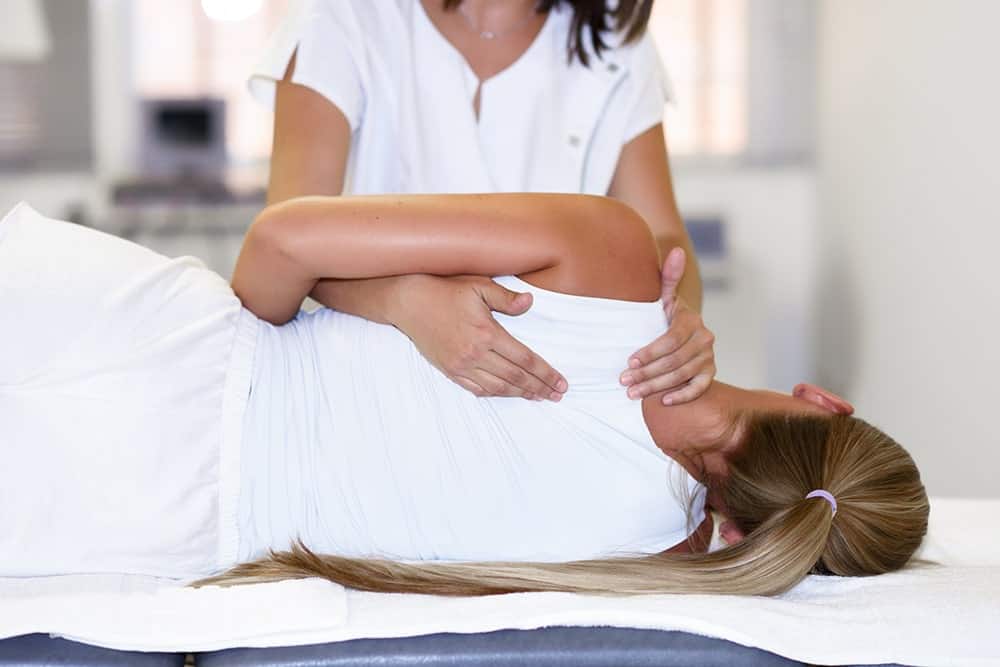Sleeping after shoulder surgery may prove difficult for most patients. With over 50,000 surgeries conducted yearly, shoulder replacement surgery is a popular procedure for reducing pain caused by several reasons, including a torn rotator cuff, previous unsuccessful shoulder replacement surgery, chronic arthritis, etc.
A shoulder replacement surgery will become necessary when basic tasks like taking a bath become challenging to perform, and non-operative treatments have failed to bring shoulder pain relief.
If you’ve been booked for one, here are a few tips for surviving post-surgery nights.
How to Sleep Comfortably After Shoulder Replacement Surgery
Sleeping comfortably after shoulder replacement surgery is often difficult for most patients. The recovery process involves several weeks of physical therapy to restore complete functionality of your shoulders, and patients are advised to be cautious when moving their arms or shoulders. It’s totally possible to dislocate your soldier at this stage, especially when you’re sleeping.
Whether you are recovering from a rotator cuff surgery or any other shoulder surgery, these recommended solutions will help you sleep comfortably post op and minimize the risk of another dislocation.
1. Wear a Sling While Sleeping

Sleeping with a sling after shoulder surgery is very important. You’ll need to wear one in the day to get on with your daily activities. But more importantly, you’ll need to wear a sling while sleeping at night.
Patients recovering from shoulder surgery often report excruciating pain while sleeping. This pain often results from unconscious movements when one is asleep, which stresses the healing bones, ligaments, and joints.
A sling will help enhance the healing of the bones and ligaments in your shoulder by keeping them immobile and static when you’re asleep. It prevents strain on the newly replaced parts and reduces the discomfort that will result from moving your body around while you sleep at night.
2. ​Sleep in a Reclined Position
Another tip for enjoying your sleep after shoulder replacement surgery is sleeping in a reclined position. This will help to prevent strain on your shoulders while you sleep and should keep you from making unconscious movements that may hamper your recovery process.
To help you sleep in a reclined position, you can use wedge pillows to prop up your body. These pillows (View on Amazon) can be placed behind your back or neck to keep your upper body slightly raised. If you’re worried about the pillows not staying in place while you sleep, you can get a recliner bed for the best results.
3. ​Prop Up Your Injured Arm with a Pillow
Certain sleeping positions will cause you to rest some of your body’s weight on your newly replaced shoulders. This, in turn, will cause pain and make sleeping uncomfortable.
To prevent this, you can prop up your injured arm with a pillow. You can place a pillow between your injured shoulder and your torso. This supports your shoulder and keeps it immobile.
This tip is especially helpful if you enjoy sleeping on your side or in the fetal position. It also helps with blood flow and prevents cramping and numbness in the shoulders.
4. Apply Ice Packs Before Bedtime

Applying ice packs to your shoulders before bedtime is another tip for sleeping more comfortably post op rotator cuff surgery.
Ice packs or cold compresses will reduce redness and swelling at the location of the surgery. It also helps numb any sharp pains you may feel on your shoulders.
You can put ice cubes in a plastic bag to make an ice pack. Frozen peas or frozen gel packs are also good options. Any of these should be wrapped in a towel before use, as it is not advisable to apply cold packs to your skin directly. To get the best results, apply the cold pack for up to 20 minutes before bedtime.
5. Avoid Putting Pressure on Injured Elbow
As much as you might want to return to your normal life after arthroscopic shoulder surgery, you must avoid putting pressure on your recovering shoulder.
Activities such as lifting heavy items, raising your arms, strenuous fitness exercises, and more will exert pressure on your shoulders and should be abstained from entirely.
Adhering to this tip will reduce pain during sleep and make sleeping more comfortable while also speeding up the healing process.
6. ​Take Prescribed Medication
It is always essential to adhere strictly to the medications prescribed for you by your physician after surgery. Doing so will undoubtedly directly impact your ability to sleep more comfortably after shoulder replacement surgery and eliminate risks of further damage.
The prescribed medications will typically help with pain management and prevent possible infections during recovery. Any concerns or complaints you may have with the medications should be made to your physician, who will be in the best position to help.
​What is the Best Position to Sleep in After Shoulder Surgery?

You may need to change your sleeping position after a shoulder replacement surgery and adopt a position that doesn’t put any pressure on your operated shoulder. A reclined position is the best sleeping position after shoulder surgery. Sleeping in a reclined position is ideal as it restricts you from moving during sleep. It also reduces the chances of applying pressure on, or straining your healing shoulders which could otherwise extend the recovery period.
Resting in a reclined position after shoulder surgery will be best achieved by using a recliner or a couch that can be converted to one. If you don’t own a recliner, a viable alternative will be using wedge pillows to prop up your body at a 45° angle and maintain a reclined position when you sleep at night.
​Anatomy of the Shoulder
The human shoulder is quite complicated and features three main bones, two joints, muscles, and tendons. In the simplest terms, the shoulder is where the upper arm bone (humerus) fits into the shoulder blade (scapula) like a ball and socket.
Anatomically, the shoulder consists of two joints. The first joint is the acromioclavicular which connects the acromion, a part of the scapula with the clavicle. The second joint is the glenohumeral joint which connects the humeral head to the glenoid.

The humerus and the scapula are connected by a rotator cuff. The rotator cuff also keeps the humerus fixed in the glenoid through its four different muscles. The glenoid is flat, shallow, and surrounded by the labrum, which is a soft protective tissue. The shoulder is also rimmed with the joint capsule made of ligaments, which also keeps the shoulder lubricated.
Common Shoulder Surgery Types
The shoulder has many different movable and immovable parts. These parts are frequently used during one’s lifespan, and this continued usage may result in some injuries. Various surgeries can fix these injuries. The more common shoulder surgeries are a reflection of the most common shoulder injuries.
The most common of these surgeries are rotator cuff surgery, debridement, labral tear surgery, and shoulder replacement. Ideally, these surgeries can be carried out arthroscopically, through open surgery or using a hybrid of both.
​Rotator Cuff Surgery
With more than 460,000 surgeries performed annually, the rotator cuff surgery is the second most performed orthopedic soft tissue repair surgery. According to a study, the number of rotator cuff repairs is projected to grow annually by 4% and exceed 570,000 procedures by 2023.
Rotator cuff surgery is used to repair torn rotator cuffs. Such tears may result from shoulder injuries, over time wear and tear or overuse from repetitive motions.
Rotator cuff surgery involves the reattaching of tendons to the bone using suture anchors made of metal or other material that will dissolve over time.
​Open Surgical Repair
Open surgical repair is one of the modes of carrying out a rotator cuff surgery. It involves making an incision three to five inches in length to detach the surrounding muscle and repair the rotator cuff directly. It may also involve the transfer of tendons from the back to replace damaged ones in the rotator cuff.
Ideally, this method is used where tears to the rotator cuff are large, extensive, or complicated. It is also useful where better visualization is required.
Arthroscopic Shoulder Surgery
Arthroscopy is another surgical method for conducting rotator cuff repairs. It is a minimally invasive procedure in which a surgeon inserts a narrow tube attached to a fiber-optic video camera through a small incision, usually less than an inch.
This tube is connected to a video monitor that allows the surgeon to view the inside of the shoulder. In addition to the incision for the tube, three small incisions are made to allow other surgical instruments to be inserted.
​Acromioclavicular Joint Surgery
This surgery is used to treat significant injuries to the acromioclavicular joint. Such injury may occur when you fall directly on your shoulder. It may result in the separation of the acromion away from the clavicle, causing a sprain or a true joint dislocation. At the severest level, the end of the clavicle protrudes beneath the skin and is visible.
The surgery is used where conservative treatment has failed and involves the resectioning or removing the end of the clavicle. In really severe cases, the ligament is moved from the acromion’s underside into the clavicle’s cut end to replace the ligaments torn due to the dislocation or other injury.
This surgery can be performed arthroscopically or using open surgery.

​Frequently Asked Questions
​Can I sleep on my side after shoulder surgery?
No, you can’t. The Department of Orthopaedics and Sports Medicine, University of Washington (UW) advises that you should not sleep on your side or stomach after undergoing a shoulder surgery. The recommended sleeping positions include a reclined or a semi-reclined position. This can be achieved by sleeping on a recliner or using wedge pillows to prop up your body at a 45° angle.
You can also support your elbow from behind with one or two pillows, so it doesn’t fall back against the bed.
​Can I take my sling off to sleep?
No, you shouldn’t. It’s advisable to always keep your sling on during the day and at night when recovering from a shoulder replacement surgery. The only time you can take off your sling is to carry out prescribed exercises or to shower.
At best, you can loosen your sling when sitting or lying down, but you’re never to remove it as it helps to keep your shoulder stable and helps you straighten your elbow without moving your shoulder.
When can I sleep on my shoulder after surgery?
Ideally, you’ll be able to sleep on your shoulder when your shoulder is completely healed from the effect of shoulder surgery. The exact timeframe for recovery from shoulder surgery may vary for each individual but on average, it’s anywhere between 4-6 months.
During the recovery process, you should avoid applying strain or pressure on the shoulder to prevent possible complications and discomfort.
What can you not do after shoulder surgery?
There are many things you should avoid doing after you have undergone a shoulder replacement surgery. Importantly, these things are activities that would place strain or pressure on your shoulder.
These activities include lifting weight, pushing or pulling objects, sleeping on your side, participating in sports or other strenuous activities, etc.
Ideally, your energies should be focused on getting better and recovering following shoulder surgery.
​Can you wear a bra after shoulder surgery?
Orthopedic specialists advise against wearing traditional bras for at least two weeks after shoulder surgery. Instead of traditional bras, you can use ones with T-back or racerback straps. Front fastening or strapless bras can also be employed.
Although wearing bras may feel uncomfortable for women after shoulder surgery, you will find it easier to do the bra’s strap before putting it on.
